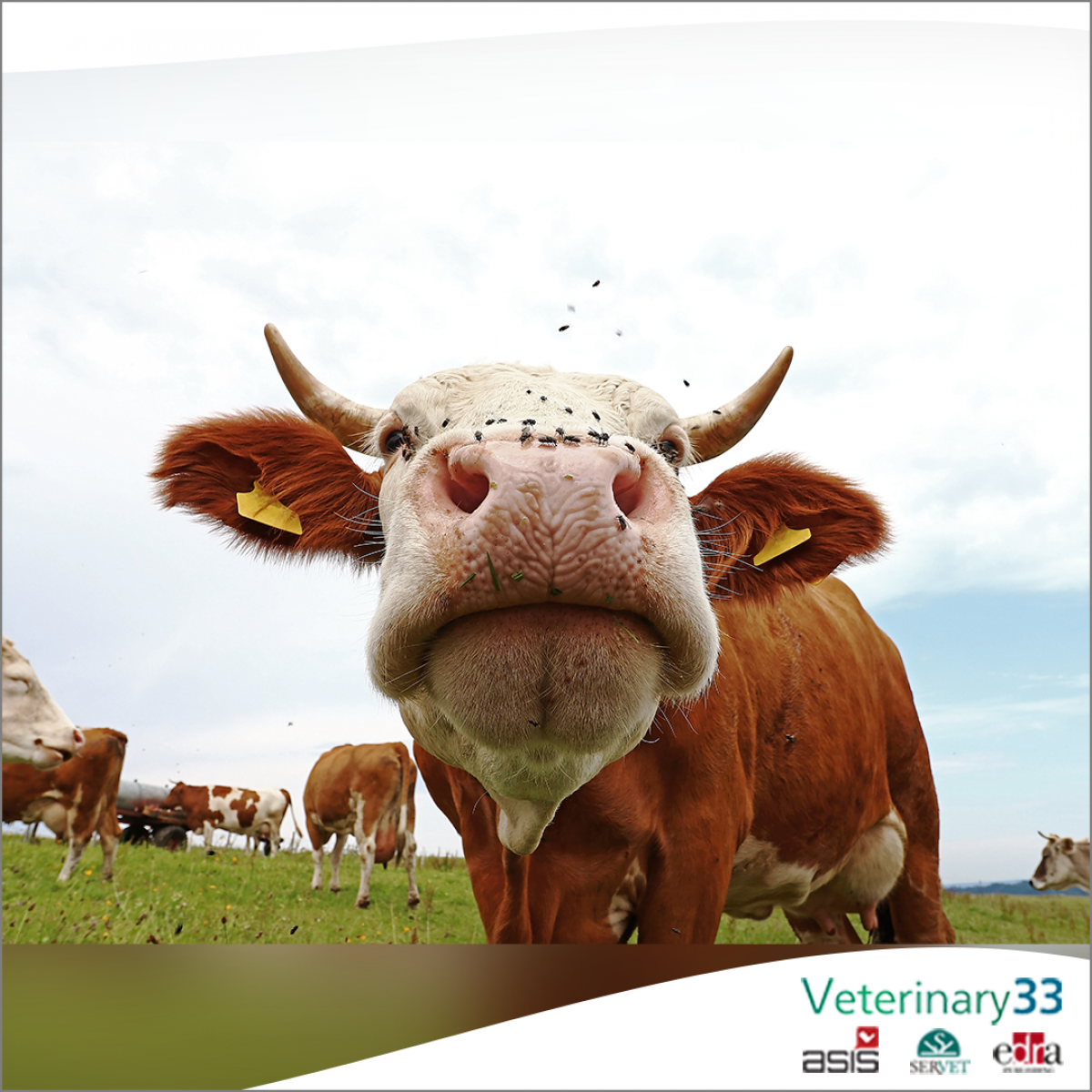Horn Fly Resistance in Organic Holstein Cattle
Horn flies are one of the most economically influential pests affecting domestic cattle, causing millions of dollars in damage and loss to the cattle industry each year. These insects are particularly devastating to organic herds, whose control methods are limited. A study conducted by Penn State’s College of Agricultural Sciences, recently published in the Journal of Dairy Science, explored genetic parameters and genomic regions associated with horn fly resistance in organic Holstein cattle.
The horn fly
Horn flies are small, dark gray flies that feed on cattle, bison, water buffalo, horses, and other large mammals, but most commonly cattle. Horn flies use their piercing mouthparts to take blood meals 20 to 30 times a day, causing painful, irritating lesions. The adult horn fly keeps continual contact with the cattle, resting on the animals between feedings. They can typically be found on the animal’s withers, back, and sides, moving to the belly during extremely hot weather or rain. Females leave only to lay eggs on fresh dung pats minutes after defecation, and can lay up to 500 eggs, contributing to an extremely large summer population. The larvae mature for one to two weeks in the manure before pupating in dry soil. Horn flies diapause as pupae, meaning they spend the winter as pupae to increase survivorship.
The horn fly’s impact
The United States loses more than $700 million annually, plus another $60 million spent by producers on fly control, because of horn fly infestations. Horn fly bites are extremely painful, and affected cattle expend energy licking their backs, twitching their flanks, switching their tails, and kicking at their bellies. The lesions can lead to secondary infections, and cause cosmetic defects in tanned or dyed leather. Studies have shown that horn flies mostly affect growing animals—calves who are protected from horn flies typically have weaning weights 15 pounds higher than those in an environment with a population of 200 or more horn flies. A similar impact has been observed in yearling cattle. In addition, horn flies have been implicated in spreading summer mastitis, which affects the mammary glands of non-lactating cows. Other concerns include the horn fly’s role as a potential vector for anaplasmosis and stephanofilariasis, a granular dermatitis that occurs mainly on the belly, scrotum, prepuce, and udder of cattle in the western United States.
Horn flies are especially problematic for organic cattle producers. A recent study in Ohio showed that half of the organic dairy producers surveyed reported that fly control was a major management challenge for their herd. Organic livestock in the United States must have access to the outdoors when weather permits, and since horn flies are most prolific in pasture settings, organic operations are at increased risk for infestations. In addition, organic U.S. herds must follow the National List of Allowed and Prohibited Substances, which prohibits synthetic chemical pest control in livestock, and makes horn fly infestation management difficult. Organic regulations also prohibit antibiotic use in livestock, meaning that should a horn fly transmit a bacterial infection, the animal cannot be treated using traditional medications. This makes horn fly prevention critical in organic herds.
Horn fly resistance
A proposed method to prevent infestation is to breed cattle who are naturally horn-fly resistant. Cattle who regularly host fewer horn flies than their herd mates are considered horn-fly resistant. However, fly resistance genetic parameters have been estimated in beef breeds, but not yet in dairy breeds. The Penn State study’s objectives were to estimate the genetic parameters of horn fly resistance, determine traits correlated with horn fly resistance, and determine candidate genes associated with horn fly resistance in organic Holstein cows.
The researchers, led by Bailey Basiel, a graduate student in Penn State’s Department of Animal Science, collaborated with 13 organic dairy producers across the United States to document fly loads on more than 1,600 pastured Holstein cattle during the height of horn fly season, between May and September, from 2017 to 2019. Fly load was assessed by trained scorers on a scale of zero to four, where zero indicated few to no flies, and four indicated high infestation. This scoring system was validated by counting flies from digital images. Cattle color composition was also documented, and percentage values of black and white were assigned. Other considered factors included lactation stage, physical environment, health status, and stayability (i.e., the likelihood an animal would remain in a herd for a set period). In addition, genetic testing was performed on a random subset of animals.
Study findings
The photos and related fly counts showed that predominantly white-coated cattle had lower fly loads than those predominantly black. The genetic findings indicated that a region on chromosome 6 was associated with the most variation in fly load, likely because a gene involved in coat pattern and coloration is located in this region. The study also found that cows with higher fly scores had reduced milk production during scoring time and that cows genetically predisposed to making the most milk were more susceptible to horn fly infestation.
More research is needed to learn the advantages and disadvantages of breeding for horn fly resistance, since predominately white cattle, which are more horn fly resistant, are also more susceptible to health problems such as sunburn and eye cancers. Until more is known on this subject, organic producers should continue to use fly traps, natural repellents, and good manure management to protect their herds.









List
Add
Please enter a comment